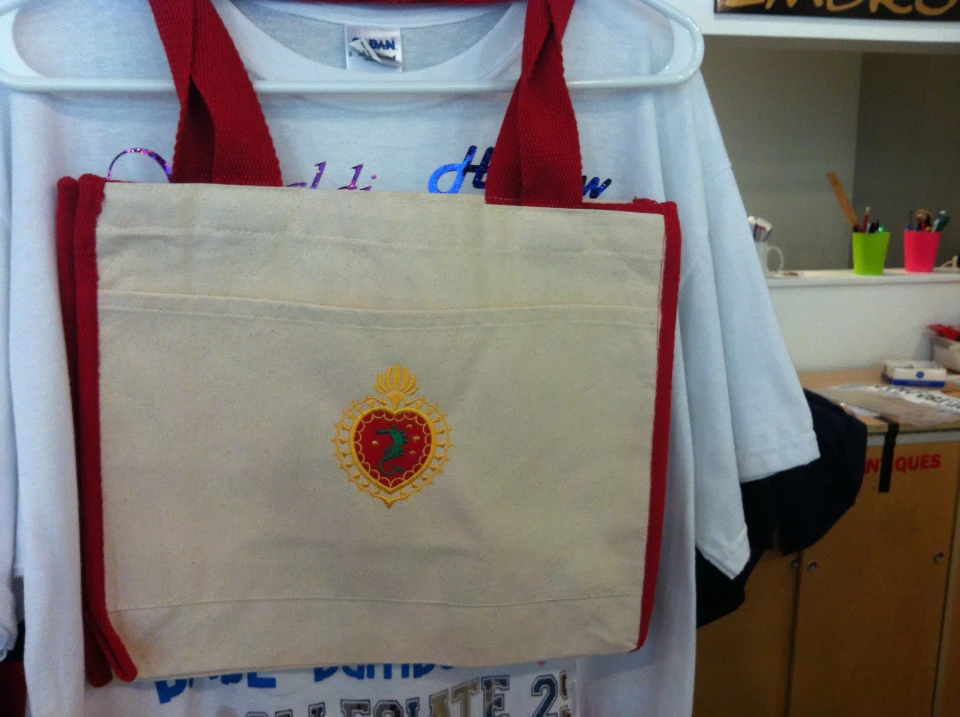The Art of Custom Embroidery: Opening the Keys to Creating Unique and Memorable Designs
Embroidery, a craft steeped in custom and creativity, holds within its complex stitches the power to change fabric right into a canvas of special expression. The keys to developing personalized embroidery designs that captivate the eye and leave a long lasting perception depend on a delicate balance of strategy, creative thinking, and attention to information. As we explore the globe of custom needlework, we reveal the nuanced interaction in between thread choice, stitch complexity, and design personalization that elevates a plain garment to an artwork. Join us on a journey with the art of customized embroidery as we unwind the enigmas behind crafting absolutely remarkable and distinct productions.
Picking the Right Embroidery Threads
When choosing needlework threads, what crucial aspects should you take into consideration to guarantee the most effective results for your customized designs? The selection of embroidery thread is vital in determining the final result of your embroidered design. One of the main factors to consider is the product of the string. Various products such as cotton, polyester, rayon, and silk offer varying levels of shine, resilience, and structure. It is necessary to select a thread product that matches the material you are stitching on and straightens with the wanted appearance of the design.
Thicker strings can add dimension and appearance to your style, while finer strings are ideal for detailed details and small message. Furthermore, considering the color fastness and washability of the string is important to ensure that your personalized styles preserve their quality and vibrancy over time.
Discovering Different Stitch Strategies
To dig into the realm of 'Discovering Different Stitch Strategies', one should grasp the ins and outs and nuances that each sewing technique offers the art of embroidery. Various stitch strategies not just add aesthetic interest however additionally contribute to the overall structure and measurement of the design. One preferred stitch technique is the satin stitch, which involves very closely jam-packed parallel stitches to develop a smooth and shiny surface, perfect for completing shapes and producing vibrant outlines.
On the other hand, the backstitch is a functional method typically made use of for outlining and adding great information. It includes stitching backwards to develop a strong line of embroidery. Furthermore, the French knot stitch includes a tactile aspect to layouts, perfect for creating textured accents like blossom facilities or attractive touches.
Exploring different stitch methods enables embroiderers to have fun with light, shadow, and depth within their designs, raising the visual allure and creative top quality of their needlework tasks. By understanding various sewing techniques, one can unlock limitless opportunities for producing special and remarkable personalized embroidery pieces.
Incorporating Personalized Design Elements
Having checked out the ins and outs of different stitch strategies such as the satin stitch, backstitch, and French look at here knot, the emphasis now changes towards incorporating personalized layout aspects in custom needlework tasks. Customized design elements play an essential duty in making embroidery tasks absolutely distinct and memorable.
An additional means to integrate personalized layout elements is by including symbols or concepts that hold special significance to the recipient or reflect their rate of interests and personality. For instance, integrating a favored flower, pet, or hobby-related symbol can make the needlework layout a lot more meaningful and individualized. Furthermore, picking shades that resonate with the recipient or align with the designated motif can even more improve the personalization of the needlework task.
Mastering the Art of Color Control

One trick aspect of color control is comprehending color theory. This consists of knowing exactly how various colors engage with each other, the emotions they communicate, and just how they can be combined to produce aesthetically attractive styles. By using shade theory principles, embroiderers can produce unified color combinations that boost the overall look of the style.
Furthermore, taking note of comparison is essential in color control. Making read the full info here use of contrasting colors can help particular components of the design pop, enhance clarity, and develop a visually vibrant needlework piece. By mastering the art of color sychronisation, embroiderers can raise their designs and produce unforgettable items that resonate with clients and viewers alike.
Enhancing Appearance With Advanced Needlework Stitches
French knots, as an example, are best for adding small, elevated dots to your layout, resembling the look of beads or producing a distinctive surface. Bullion knots, on the various other hand, can be used to produce twisted, ropelike aspects that add an extravagant feel to the embroidery. Seed stitching includes tiny, scattered stitches that can fill out areas with a multicolor structure, while turkey work produces fluffy, dimensional accents similar to animal fur or foliage. Explore these advanced embroidery stitches enables you to press the borders of traditional needlework and develop absolutely one-of-a-kind and aesthetically attractive appearances in your styles.
Conclusion
To conclude, the art of custom-made embroidery includes a mix of selecting the right strings, checking out various stitch strategies, integrating tailored style elements, understanding color coordination, and boosting texture with advanced stitches. By recognizing and executing these key components, embroiderers can create special and remarkable designs that display their creativity and ability. Embroidery fanatics can unlock the secrets to developing stunning and custom pieces that stand out and leave an enduring impact.